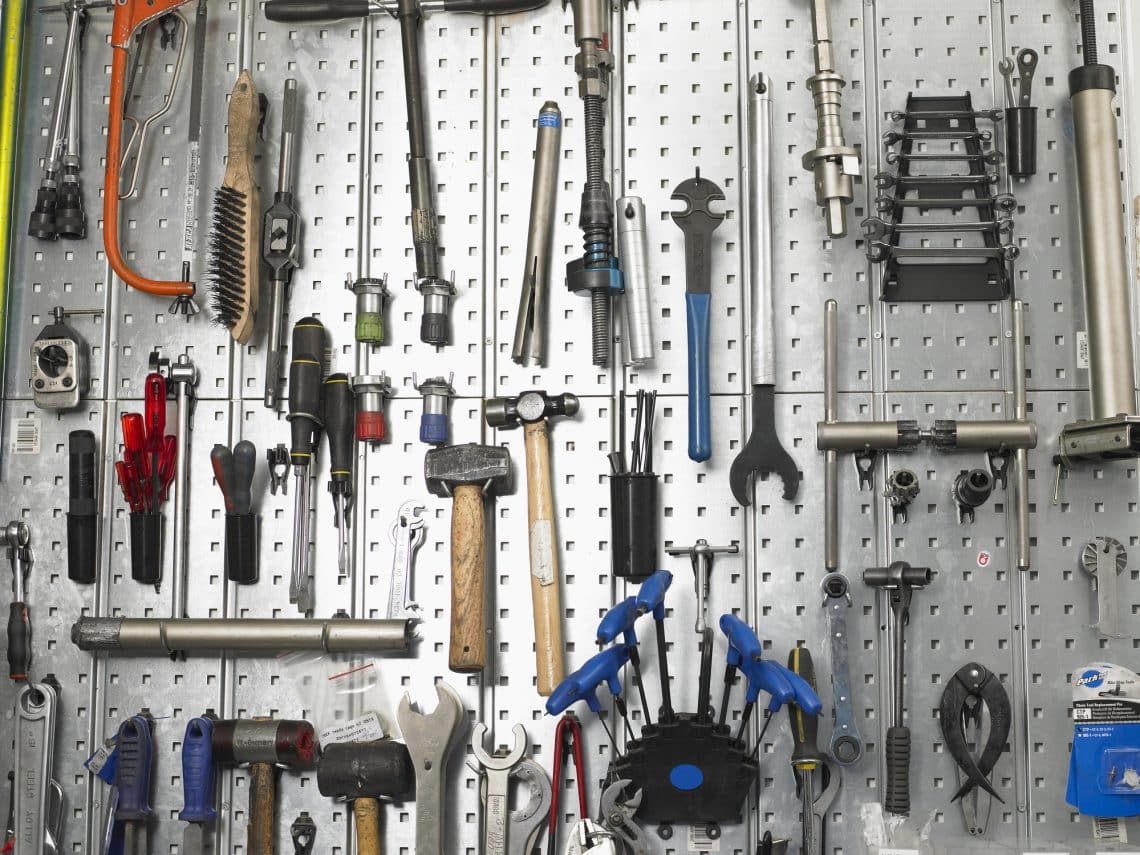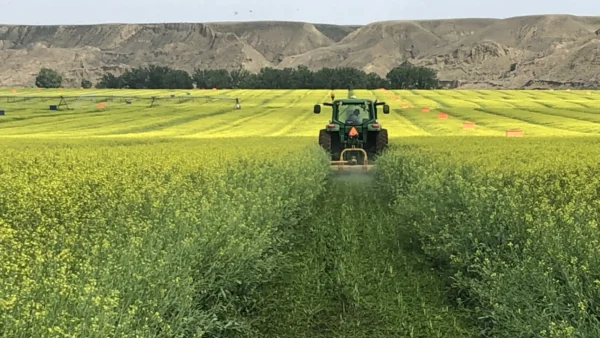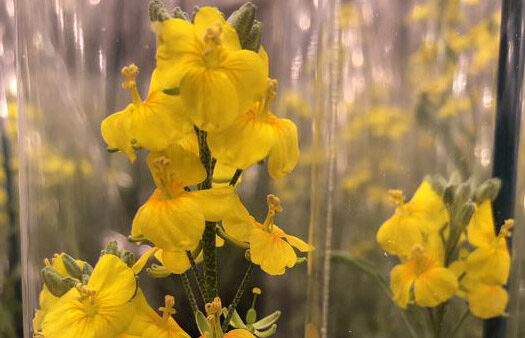Precision ag is continuously growing and changing, and experts say it’s important to stay on top of it to fully understand it.
Farmers have traditionally relied on experience and historical knowledge to make decisions each season about their farming practices and the use of crop inputs. In the last 20 years, unprecedented, low-cost access to real-time data has changed farmers’ ability to analyze data, practice precision agriculture (PA) and automate their equipment and devices via the internet.
“Precision agriculture is no longer a new idea,” says Yu Zhang, research assistant professor, Department of Agricultural and Biosystems Engineering, North Dakota State University. “It has become the third wave of the modern agricultural revolution. The first wave [was] based on mechanization and the second wave [was] based on genetic modification. To feed the projected global population of 9.6 billion by 2050, new technologies have advanced agriculture including precision agriculture.”
Since those early days of PA, a wide range of sensors, monitors and controllers, including shaft speed sensors, pressure transducers and servo motors have been added to farming equipment to automate the application of inputs using prescriptions. With the rapid introduction and adoption of mobile computing, high-speed internet, and remote sensing from satellites, drones and unmanned aircraft systems (UAS), the reach of PA has grown immensely, so much so that it touches almost every area of a farm operation.
Precision Financial and Agronomic Management
“When I think about precision agriculture, I split it into two different camps,” says Bob Gunzenhauser, agronomy science lead at Granular, a digital agriculture software business of Corteva Agriscience. “One camp is machine control: better seed placement, sprayer and planter shut-offs, auto steer, variable input application, etc. The other is the financial information side that has a less obvious payback. Some years precision financial management pays off well, in other years, it does not. It is much harder to have a picture of the effects of precision financial management than to have a picture of precision machine management. Long term, a grower’s profitability and sustainability require both precision financial and agronomic management. What we are doing is taking what we are already doing and learning how to make it better.”
Agronomy drives financial decisions and the bottom line. Precision machine operation can enable the agronomic side. Over time, precision financial decisions add up. Taken together, they can help maximize farmers’ profitability and ensure their long-term sustainability. These practices use and generate large amounts of data obtained from both internal and external sources.
“While the benefits of precision farming are limitless, they are centered around efficiency, cost savings, agronomic decision making, and operator enhancement,” says Dan Halliday, digital and precision solutions & telematics product management at CNH Industrial. “Before seed is planted, we can monitor soil conditions with remote sensing to collect data that helps us determine how to approach the planting season to ensure the seed has optimal germination and growth conditions. The sophisticated camera technology present on drones and satellites allows us to capture high-resolution imaging and data at specific wavelengths, which allows us to determine the physical state of the crop. The imaging can be used almost instantaneously to pinpoint problematic areas and anticipate changes to soil conditions and plant threats before they occur. Ultimately, growers and their advisors can use collected data to determine the proper action to take, which actions have been effective in producing higher, more sustainable yields.”
Each year, it is possible for growers to accumulate hundreds of new data points for each acre in their operation. Managing, storing and analyzing the data to produce informed decisions can become a massive, overwhelming challenge. It is not uncommon for farm operators to contract with third-party analysts to provide data analytic services. Data control, who owns that information and what privacy rights the farmer has — are increasingly important concerns.
“Most major companies have terms and conditions regarding grower data,” says John Fulton, associate professor, Ohio State University. “It is frequently stated that farmers own the data, but one must understand who has access to the data? Growers are entering into legal agreements with a number of companies today providing data-based technologies and services. Each company offers tools and data collection procedures. However, it is the responsibility of the farmers signing these data contracts to understand and know their privacy rights concerning data sharing, ownership, and how and who can use it. As the industry moves down the path of digitizing agriculture in all its various forms, we are resolving some of these questions, but there is a lot more to come as the industry matures in the realm of digital ag.”
Kyle King, a Climate Corp. crop advisor, notes that farmers have traditionally done a fantastic job year in and year out to make the best decisions, to make the most bushels, and to make the most profit and return in a sustainable way.
“The demands put on our farmer customers from a consumer standpoint are not slowing, nor are they going to slow,” he says. “Growers want to know how they can do more with less, how to be most efficient with the tools and resources they have. Some growers, along with their agronomic advisors, have been collecting data for 20+ years. The challenge is how to use that data to drive decisions. We help them bring all of their data into one place to where we can actually start to ask the data-based questions and get some response back.”
With 20% of the data informing 80% of our decisions, will more data actually be helpful?Bob Gunzenhauser
In the 1990s, as satellites with multispectral field imaging capabilities became more widespread, some growers were provided daily crop condition reports and field maps. After accumulating these maps for several years, the farmers had an overwhelming amount of field data.
Ken O’Brien, Granular area district sales manager, recalls how they refined the images provided to growers.
“It sounded great, but we quickly realized that near-daily imagery across a grower’s entire operation produced more images than a farmer could use,” he says. “We needed to have a process that would sort through all those images and tell a grower which fields they need to inspect and where areas those fields need to be inspected. Farmers do not have the time to look at every field every week, but if you can tell them where are the fields that are at the most risk, you can really help direct them to the right fields and the right places in those fields to make their scouting time very, very valuable.”
Prescriptive Modeling
The Climate Corporation and Granular are both making a shift into modeling and data analysis to reduce the time and effort farmers need to spend to take advantage of all the data available for their operation. For example, the yield maps generated by the first generation of harvest yield monitors in the 1990s are now fully digitized and linked with other data sets. This information is accessible for modeling by their consultants and trusted advisors. Together, these data sources can provide a flood of data when in its raw form does not always yield an overwhelming amount of information.
“As we think about working on disease recognition via remote sensing and disease modeling analysis, it really starts with farmers having good data in their account: good planting data, good harvest data, and good soil data,” King says. “The more data they have, the better our models can be predictive in helping farmers achieve their goals.”
King anticipates that in the next few years, prescriptive analytics will be able to use multiple levels of data to really go to work and partner with farmers.
“This is putting more pressure on seed companies to use data science to make more hybrids that can be matched with the predictive analytics that are being made available,” he says. “The more we work with prescriptive analytics, the more we see new opportunities to think differently to get the right hybrid in the right field at the right seeding rate.”
Gunzenhauser agrees that modeling is an essential tool to get the most useful information from the data being accumulated by growers.
“With modeling algorithms, you can model almost every decision an agronomist or a farmer makes,” he says. “What I am interested in is having the tools to make the decision processing better. How did we make decisions before? We talked with others to gather information, to see what they did and how it worked out. We had our own mental model to make decisions.
“The question is, ‚ÄòWhat additional information do we need?'” Gunzenhauser says. “As we work on these models, we already have so much information, but what is it we are missing? Soil health improvement data? Soil microbiology? We know there are things going on in the soil that we cannot see. The addition of more data may be helpful, but then the 80/20 rule comes into play. With 20% of the data informing 80% of our decisions, will more data actually be helpful? More data will be useful only to the extent it will help growers and their trusted partners make better decisions to improve profitability and sustainability.”
To maximize output, autonomy will become an integral part of their modeling application. The movement towards managing agronomic data will continue. Halliday says agriculturalists have just begun to realize the value of agronomic data when making operational decisions. Machine learning and artificial intelligence will become an integral part of the data management aspect of farming. Strategic actions to incorporate more autonomy into daily farming operations with more robotic and drone technology will continue to intensify.
PA Beyond U.S. Borders
U.S. and European farmers both use precision farming technology, but for somewhat different purposes.
“Precision Ag has progressed in many ways across the globe but in different ways. The shape of agriculture in Europe is different than it is here in the United States,” Fulton says. “Recordkeeping for European farmers is at a higher level than here in the United States since they are required to maintain records to document compliance with the government’s various farm programs. European farmers talk about using PA for record-keeping, but they are using many of the precision ag technologies found here in the United States. EU Farmers need to maintain records in order to satisfy their government’s requirements around agricultural production practices.”
There are different levels of PA depending on geographic regions and whether farmers have predominantly small or large-scale farming operations.
“While areas of the world such as the United States, Canada, Australia and New Zealand have engaged in more advanced precision agriculture, emerging countries are beginning to incorporate more basic principles into their operations,” Halliday says. “They are starting to use more GPS and guidance technologies to gain the same benefits that we have appreciated for many years.”
Fulton anticipates there will be an opportunity for one person to simultaneously operate several machines as more autonomous capabilities become available. He says developers are still working through concerns such as liability.
“There will be a need to be an operator in the field or monitoring from a central control station, but it will become more akin to babysitting the machines instead of operating them,” Fulton says. “I think we will continue to see more drone applications, whether for spot spraying or for scouting during the growing season. They will be collecting more data than we can imagine. There will be more internet-of-things devices coming to agriculture. This may open more opportunities for artificial intelligence to operate machines in response to real-time information gathered by the machine.”
In some areas, the inability to have that good internet connection is limiting the progression of precision agriculture. If the communication industry can improve rural broadband in the United States, it will help move us down the road to a more wide-spread application of precision ag.












